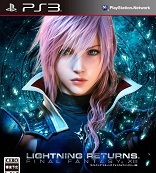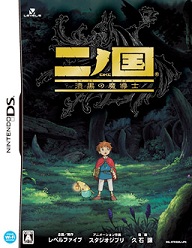Summon Night: Twin Age
Nintendo DS
Reviewed: 06/16/2008
 The Summon Night series has a decent following in Japan. Since its release as a Strategy-based RPG for the PSX in 2000, the core series has seen three more strategy installments with five offshoots that focus on action. Like Troy McClure, you may remember two of these having been released by Atlus in 2006. The games were from the Summon Night: Swordcraft Story series, and the first two non-core games to be released. With this fifth offshoot, Atlus brings its North American audiences to the Twin Age.While Summon Night: Twin Age forgoes both a strategy system and the 2D fighting style seen in the Swordcraft Story games, it does keep the best of the series’ themes well in place. The world revolves around Summoners and the beasts they summon, along with the different races that inhabit the world. However, this installment is light on the plot; in fact, a
The Summon Night series has a decent following in Japan. Since its release as a Strategy-based RPG for the PSX in 2000, the core series has seen three more strategy installments with five offshoots that focus on action. Like Troy McClure, you may remember two of these having been released by Atlus in 2006. The games were from the Summon Night: Swordcraft Story series, and the first two non-core games to be released. With this fifth offshoot, Atlus brings its North American audiences to the Twin Age.While Summon Night: Twin Age forgoes both a strategy system and the 2D fighting style seen in the Swordcraft Story games, it does keep the best of the series’ themes well in place. The world revolves around Summoners and the beasts they summon, along with the different races that inhabit the world. However, this installment is light on the plot; in fact, athimble of scotch contains far more plot and a bit more kick than Twin Age ever will. What plot it does have is not bad, but it is also nothing that any player over the age of ten is going to care about.
Characterization is the sword that Twin Age leans upon in place of plot. These are the best two-dimensional characters ever in a JRPG. They are likeable despite shouting fluff often. The characters do repeat themselves a bit, but they also keep the story light-hearted, and Nassau and Mardin deliver a pretty decent endgame pep talk. Fans of anime will feel right at home.
Twin Age does keep the gender-specific hero system omnipresent in most Summon Night games. Players can choose between Aldo of the Bared-Boy Midriff or Reiha the Possible Sister-Girlfriend. Aldo relies on physical attacks and Reiha is all about the magic. Choosing one of them as the main character makes the other one the partner and both characters will always be in the party when they are together to the extent that the partner cannot be removed from the party. The main reason between choosing one over the other is interaction with the other characters that are encountered. The main character makes the choices that affect character reactions, rank bonuses, and destination. This makes the main character responsible for the characterization in the game, and that affects both plot and game mechanics.
 |
The flow of Twin Age is similar to that found in Strategy RPGs. Events begin with the story portion before heading to the world map. The world map has most of the special menu functions, such as Summoning, Skill Allocation, Party Chat, Party Change as well as the regular menu. After taking care of the special functions, the player chooses the destination and begins playing through a dungeon. Dungeons are short; the longest ones have nine levels in them and they are found after you beat the main game.
Gameplay shines throughout Twin Age. A fusion of the dungeon crawling found in Shining Force NEO, the skill trees used in World of Warcraft, and the touchscreen
mechanics found at your local supermarket; Twin Age delivers a quick, simple and un approach to beating up tons of bad guys. The entire game is played using the stylus. Touching an area on
the screen causes the character to move there. Keeping the stylus in one spot on the touchscreen causes the character to run as long as it is held down, or the player can slide the stylus to the edge of the screen in the direction they wish and the character will autorun until told otherwise. Touching an enemy causes the character to attack it. And the character will go after that enemy. Aldo pushed through a group of enemies to attack someone on the other side. It was impressive, as expectations normally assume Aldo would just run against the conglomerated mass until told to stop. Unfortunately, such commands can only be directed at the currently playable character, limiting all direct commands to either Aldo or Reiha. Thankfully, the player can also switch between the two at any time, regardless of who is the main character.
Hotkeys make up the rest of combat. Located within collapsible menus on either side of the touchscreen, all
usable skills can be placed within twelve slots. Touching a skill will select it, and then the player will then have to follow that skill’s directions to apply it to combat. Most of the time this involves simply tapping a character or enemy, but certain skills require the player to draw lines on the touchscreen to determine the area of effect. It is not as tedious as it sounds, either. It actually expedites combat very quickly and allows a lot more control over damage. On top of that, when casting or using a skill the player becomes invincible to atack. Timing this with an enemy’s attack will net better results, but boss-class enemies can use this tactic as well. The whole system is great, and is something I would personally like to see more of in action RPGs. Its only failing did not occur until endgame, when the amount of stuff happening caused certain commands to misfire.
 |
Twin Age also contains a useful crafting system. Items found in the dungeons are used to make weapons, items and armor. Crafting materials are very common, and crafting costs far less than outright buying the weapons or items. One run-through a dungeon will typically net the player what they need to get their next weapon or armor. The cash crafting saves the player will help them if they decide to do the extra content.
The last system feature is the NPC support level. NPCs gain support when they accompany the main characters through dungeons or are the recipient of characterization bonuses. Support determines summoning outcome, dialogue, and the special ending that Aldo and Reiha get after the credits roll.
Graphically, the game is great. It is entirely sprite-based and fluid–there is never any slowdown. The only
time the graphics in the game glitched were during the last boss fights and the boss fights in the extra content. Sections of the bosses were removed or distorted. While this was annoying, it happens so rarely
that it is forgivable. The sprites are animated well; their grainy features hidden until Aldo or Reiha execute one of their final attacks. A poor decision was to use the in-game sprite as a close up during these moments. The art direction is smooth, colorful and enjoyable. Cutscenes are given by large-sized character portraits reminiscent of Super Robot Taisen or Wild Arms XF. The dungeons themselves look good, though the world map is uninspired. A warning to those that like grit: Twin Age, with its pleasing art and light-hearted story wash away any and all grit. There’s nary a dark moment to be found in the game.
 |
The extras in the game are decent. There is the aforementioned bonus dungeons and music box; the bonus dungeons being the hardest parts of the game, natch. Restarting a game with an Ex File saved will allow the player to keep all cash, skills, skill points, bestiary entries, and support ranks. The game is short and can be beaten within thirteen hours. The extra content adds two or three more hours to the game, but any reason to replay it will be to see the other endings or choose different answers to the plot-related questions. The combat system will support
the player very well if they chose another endeavor.
The combat system is excellent, the majority of the game is good, and it is probably one of the best portable action RPGs out there. There is little repetition ue to the lack of button-mashing, but after a few hours of playing it at a time it can get boring from lack of interactivity. The biggest complaint any player will have with the game is its insanely easy level of difficulty. The game is very easy because the player can abuse the invincibility given by casting against all enemies in the game. If the main character is killed, control shifts to the partner. The game is just plain easy and it is a shame that such a great battle system is not held up to a challenge.
Despite the lack of difficulty, Summon Night: Twin Age is a game that can easily inspire the player to complete all the extra stuff in order to experience the game to its fullest–perhaps even those who don’t normally do so. The game is fun and a worthy addition to any collection. If there were to be a sequel,
hopefully there would be some more difficulty, but leave everything else alone.
-Russ Ritchey
| Score Breakdown | ||
| Overall Very Good Out of 10 See our Review Criteria |
Gameplay | Great |
| Story | Below Average | |
| Graphics | Very Good | |
| Sound/Music | Very Good | |
| Replay Value | Good | |
| The Verdict: 7 | ||








